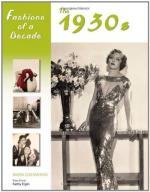|
This section contains 300 words (approx. 1 page at 300 words per page) |

|
The mobster in the 1930s was a new class of criminal. Prohibition had changed the nature of organized crime for all time. Distinctions between criminal and legitimate activities became blurred, affording opportunities for expansion and concealment that exceeded the wildest dreams of the Capones and others among the old bootleggers and racketeers. Prohibition had given the bootlegger an incentive to expand his operations beyond his original areas of control, to establish cooperative arrangements with other gangsters, and, with its repeal, to diversify. An increased level of violence among gangsters introduced in the 1920s continued into the early 1930s. Such warfare, much of it drawn along ethnic lines, had become an acceptable means of determining territorial control, eliminating or subduing competition, and settling differences. But such conflict would inevitably extract an ever-costlier toll, the loss of a gang's political connections, interruption of the flow of...
|
This section contains 300 words (approx. 1 page at 300 words per page) |

|




